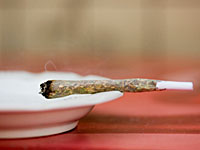Abstract
“Prior to 2002, few clinical data were available to indicate whether cannabis extracts may be beneficial. However, in the last two years, results of several placebo-controlled clinical trials of orally administered compounds have been published, and these cast doubt on the efficacy of delta9-tetrahydrocannabinol (delta9-THC) in objectively reducing spasticity in MS. By contrast, it has been claimed that sublingually administered cannabis extracts that contain approximately equal concentrations of delta9-THC and cannabidiol, a natural cannabinoid that does not act on the CB1 receptor, can produce a statistically and clinically significant reduction in spasticity, although this claim has yet to be thoroughly validated. Nonetheless, results of preclinical trials also lend support to the hypothesis that the endogenous cannabinoid system may be involved in the regulation of spasticity and pain. A better indication of the clinical potential of the different cannabis extracts will have to await the publication of the most recent clinical trial data. This review critically evaluates the most recent evidence available on the potential use of medicinal extracts of cannabis to relieve pain and spasticity in multiple sclerosis.”

